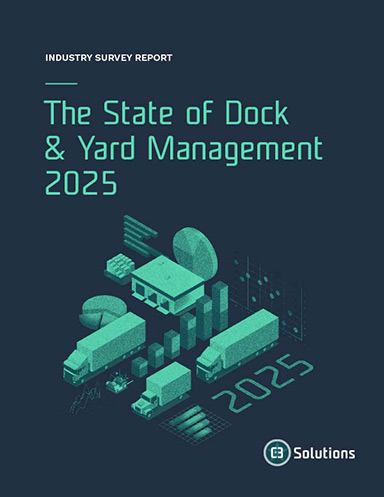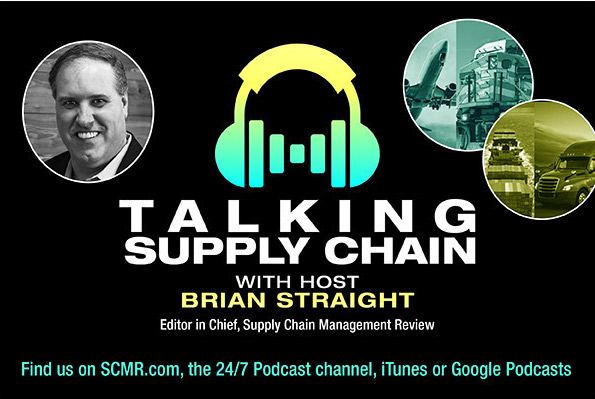By Luis Felipe Bitencourt de Brito Sena and Zhan Ding
Editor’s Note: The SCM capstone Dealing with Supply Chain Complexities with Scenario Intelligence was authored by Luis Felipe Bitencourt de Brito Sena and Zhan Ding. The project was supervised by Dr. Maria Jesus Saenz ([email protected]) and Dr. Devadrita Nair ([email protected]). For more information, contact the thesis supervisors.
Transitioning into a new product category poses significant challenges for businesses, particularly in managing supply chain complexity. Companies strive to enhance operational efficiency while mitigating risks associated with uncertainty. However, fluctuating demand, extended lead times, and the need to manage an expanding product portfolio often exacerbate supply chain challenges. To remain competitive, businesses must adapt their supply chain strategies dynamically to address these issues.
Supply chain complexity often leads to inefficiencies such as inflated costs, excessive inventory, and difficulty meeting customer demands. For businesses expanding their product portfolios, these inefficiencies are magnified as they attempt to balance service levels with effective inventory management. Many companies lack tools to simulate the impacts of new product launches, seasonal demand shifts, or market fluctuations. As a result, they struggle to navigate unpredictable scenarios, often overstocking or understocking inventory and compromising operational efficiency.
Our research aimed to address these challenges by implementing scenario intelligence through simulation modeling. This approach enables businesses to simulate multiple supply chain scenarios, forecast potential outcomes, and optimize inventory policies for various conditions. By tailoring simulations to a company’s unique supply chain environment, the research provided actionable insights to improve decision-making, reduce costs, and maintain high service levels. The core objective was to explore how scenario-based simulations could help businesses balance operational efficiency and inventory performance under uncertainty.
The simulation model evaluated two forecasting methods: exponential smoothing with a damped trend and the company’s current forecasting approach. It assessed supply chain performance under varying demand and lead-time scenarios to identify the most effective inventory policies. Key metrics included forecast accuracy, safety stock levels, and inventory costs. Measures such as Mean Absolute Percentage Error (MAPE) and Root Mean Square Error (RMSE) quantified forecast accuracy, while safety stock and inventory costs highlighted financial and operational impacts. Synthetic demand data ensured clear insight into how improved forecasts affected inventory management.
Improved forecasting
The research revealed notable findings. Using exponential smoothing with a damped trend significantly improved forecast accuracy, reducing errors by 26% and lowering MAPE from 28% to 20.7%. This improvement directly influenced safety stock calculations, enabling the company to maintain appropriate inventory levels without excessive overstocking. Enhanced forecast accuracy also reduced overall inventory costs by 14%, all while preserving service levels. These outcomes demonstrated that better forecasting improves both cost efficiency and customer satisfaction.
Additionally, the research introduced a dynamic scenario analysis tool, allowing decision-makers to simulate the effects of various supply chain scenarios, such as demand shifts, lead-time changes, and policy adjustments. This tool enabled the company to align inventory strategies with real-world challenges, increasing adaptability to market fluctuations and unforeseen disruptions. By mitigating risks of overstocking and understocking, the company struck a better balance between cost efficiency and service reliability.
These findings emphasize the strategic value of scenario intelligence in managing supply chain complexity. In an era of increasing uncertainty and volatility, the ability to simulate and tailor inventory strategies provides a critical competitive advantage. Simulation models offer a robust framework for reducing costs, maintaining service levels, and navigating complexity. This capability is particularly crucial in industries requiring high responsiveness, such as retail, manufacturing, and logistics.
Scenario intelligence also empowers organizations to make data-driven decisions, ensuring their inventory strategies align with broader goals. By bridging the gap between operational efficiency and effective risk management, these tools enable businesses to achieve resilient and cost-effective supply chain operations. For organizations expanding product portfolios or navigating dynamic market conditions, scenario-driven simulations offer a pathway to sustained success.
Every year, approximately 80 students in the MIT Center for Transportation & Logistics’s (MIT CTL) Master of Supply Chain Management (SCM) program complete approximately 45 one-year capstone projects.
These students are early-career business professionals from multiple countries, with two to 10 years of experience in the industry. Most of the research projects are chosen, sponsored by, and carried out in collaboration with multinational corporations. Joint teams that include MIT SCM students and MIT CTL faculty work on real-world problems. In this series, they summarize a selection of the latest SCM research.
SC
MR


More Inventory Management
- Dealing with supply chain complexities with scenario intelligence
- Why build-to-order warehouses demand smarter WMS solutions
- How we gamified mathematical optimization using burritos
- Combating sequential time delays in pharmaceutical supply chains
- Risk management: The intersection of supply chain and aircraft availability
- More Inventory Management
What's Related in Inventory Management

 Explore
Explore
Topics
Procurement & Sourcing News
- C.H. Robinson rolls out AI agent to address LTL classification overhaul
- Danone latest to announce new US investment
- Uber Freight’s Val Marchevsky to deliver Keynote at NextGen Supply Chain Conference
- Unlocking the green grid: Innovations for eco-friendly last mile
- Dealing with supply chain complexities with scenario intelligence
- Securing critical minerals during a global trade war
- More Procurement & Sourcing
Latest Procurement & Sourcing Resources

Subscribe

Supply Chain Management Review delivers the best industry content.

Editors’ Picks




